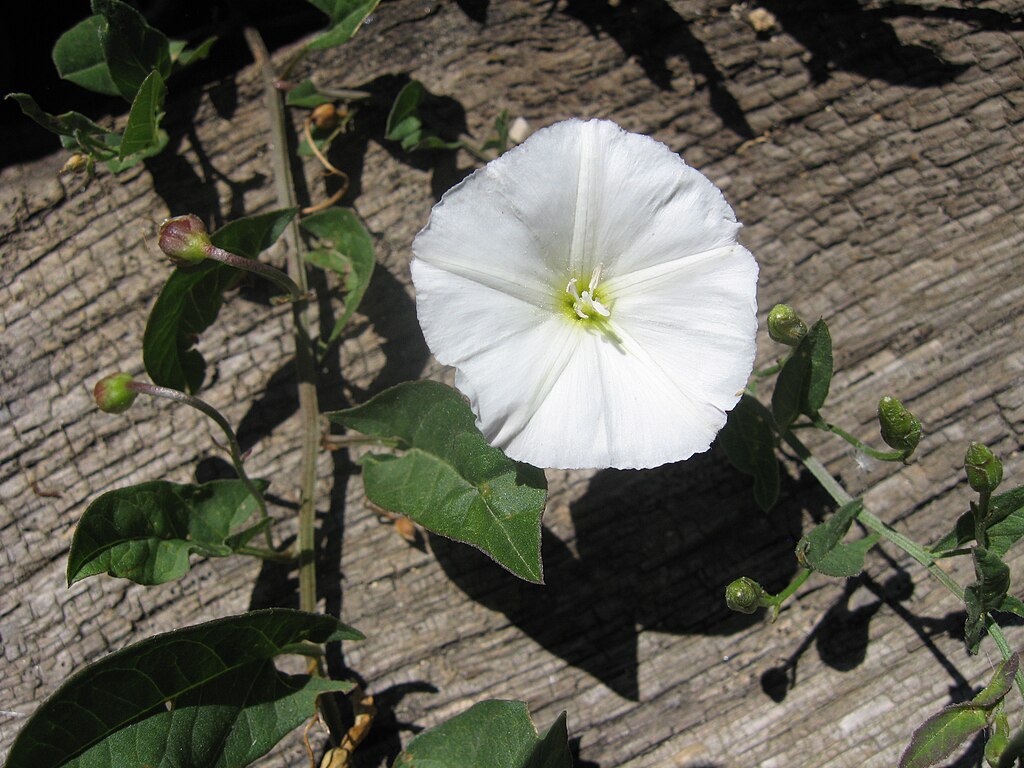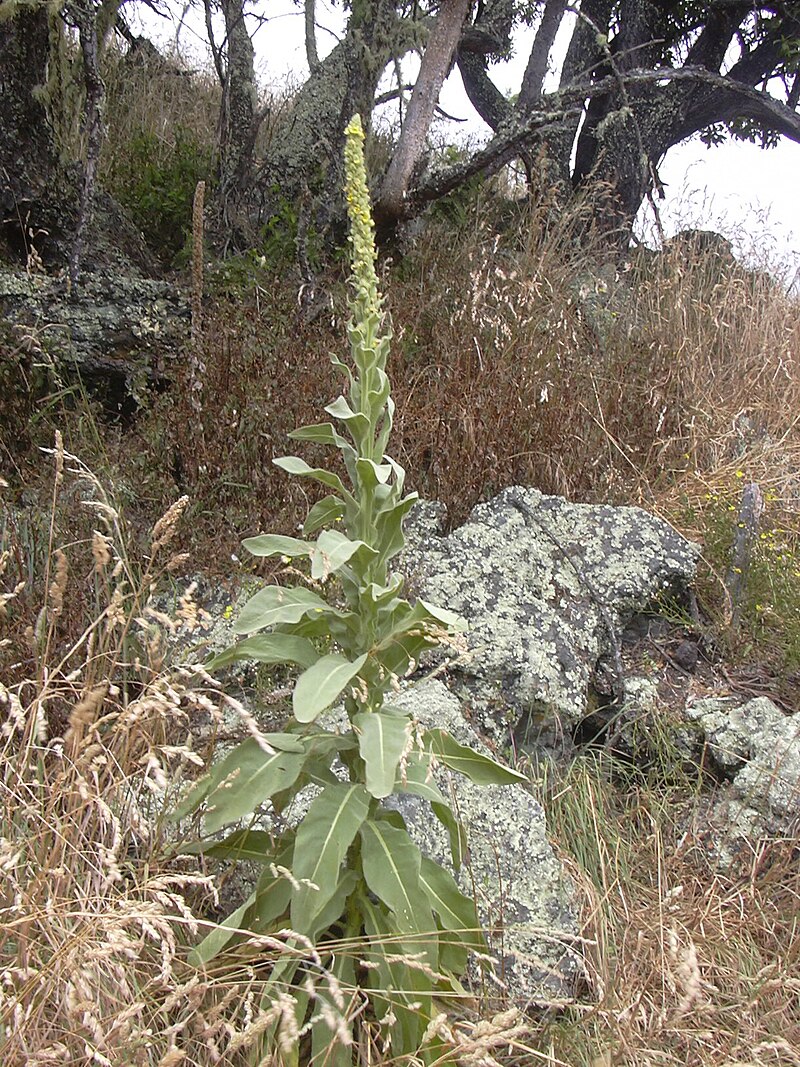1. Pokeweed. (Not to be confused with Hawaiian poké). Phytolacca americana is basically poisonous to humans. Claims that humans have died after eating one berry may have involved small children who might have been sick already. I know people, mostly younger children who were born into large families during the Depression, who've carefully prepared a very young stem or leaf in early spring, when the level of toxicity is lowest, and eaten it and claimed to like it. And they're still here, and some of them are still active and healthy. But although some small birds and animals do eat pokeberries, my elders said "If you watch closely, you'll see that even birds that eat very many will start acting sick." When this plant has sprouted in the not-a-lawn, I've cut it down. It's the most toxic of the common local plants I know. It's not as deadly as the pretty oleanders people used to cultivate in California, but it will definitely make people sick, and not just in a benign purgative way either. (If you ever really need a purgative, lobelia works, but rose petals are more pleasant and just trying to swallow something that won't go down far, such as your finger, is safer.)
2. Trumpet flowers--the whole family. Apparently all plants in the genus Datura are toxic to humans. Virginia has the dubious honor of association with our native species, which was first identified as the Jamestown Weed and is now known as jimsonweed. It apparently coexists and may hybridize with other species in this genus, worldwide. This is another plant that will definitely make people sick, possibly dead, only Datura typically makes them demented first. Experimenters claim that the leaves have a "bitter and nauseous" taste; either the colonists who cooked and ate bowls full, like spinach, were extremely hungry, or else they secretly wanted to take wild drug trips. Although they certainly made themselves sick, they shipped this plant back to Europe, where "witches" reportedly used it to "fly." This weed may pop up anywhere, in any year. However hungry we may become, we should recognize that this is not food.
 |
| Photo anonymously donated to Wikipedia By No machine-readable author provided. Taka assumed (based on copyright claims). - No machine-readable source provided. Own work assumed (based on copyright claims)., CC BY-SA 3.0, https://commons.wikimedia.org/w/index.php?curid=237684 |
 |
| Donated to Wikipedia by Galia: https://en.wikipedia.org/wiki/Convolvulus . While some Convolvuli have triangular or oval leaves, note this one's resemblance to the Datura above. |
4. Mullein. I like this fuzzy-leafed plant, though it's not really very useful. Its main value to humans is probably as "Quakers' Rouge." Members of churches that used to ban wearing rouge would rub a leaf against their faces for an instant blush. Verbascum thapsus may or may not be really useful as a natural antibiotic or antifungal treatment, probably depending on the amount of glycyrrhizin in the plant, which probably varies.
 |
| Photo donated to Wikipedia By Forest & Kim Starr, CC BY 3.0, https://commons.wikimedia.org/w/index.php?curid=6128973 |
The year the not-a-lawn had enough bare ground for this plant to reach its full impressive size, I was astonished that people thought it was marijuana. It is not closely related to marijuana or tobacco, nor does it really look like either. (Though similar in shape, the leaves are much thicker and hairier than tobacco leaves.) The herbal benefits North Americans have claimed for it have, however, involved smoking the dried leaves as what some herbalists used to hope would be an effective way to break the tobacco addiction. Every plant ought to be good for something--but as nicotine produces a real physical addiction, and mullein contains no nicotine, it's not really even good for those who want to quit smoking. Perhaps its best use is that, after the flowers die down, the stalk is woody enough to make a nice straight light stick, not strong enough to make a reliable walking cane but adequate for a towel rack, spindle, etc.
5. Roses. My white roses began to bloom last weekend, and very pretty they are. If you need a fast but gentle emetic, I'm told, as it might be to give to a child, a bowl of rose petals soaked in honey or syrup is one the child will probably like taking. For other purposes...I've been known to eat an occasional rose hip (mostly seeds, not much flavor, but they are a natural source of Vitamin C in winter), but mostly I think of roses as something to look at, not something to eat.
6. Cleavers. Galium aparine, also sometimes called Galium horridum, is a sort of scentless bedstraw covered in prickly little hairs that stick to animals' fur or humans' clothes. "Horridum" means simply "bristling," in Latin, although as a child I found the sensation of having cleavers stick to me horrid.
 |
| Photo donated to Wikipedia By Mike Pennington, CC BY-SA 2.0, https://commons.wikimedia.org/w/index.php?curid=14249638 |
Euell Gibbons said that in Pennsylvania people used to eat bowls full of cooked cleavers, like spinach, in spring, and found it to be "the reducing diet par excellence, painlessly paring pounds from plump persons."

Grandma Bonnie Peters used to dry it and use it in tea. As a tea Galium aparine is generally agreed to have a stimulating effect on the kidneys. I've seen and felt it as a powerful stimulant and febrifuge--"Cleavers take down fevers" fast.
The effects of natural herbs vary depending on the conditions under which they've grown, but after having used cleavers as medicine I'm not inclined to try it as food.
7. Lobelia. In the early twentieth century Dr. Jethro Kloss, of Battle Creek and the Washington Adventist Hospital, used lobelia as a purgative for patients with several diseases. It certainly will induce vomiting fast, without other painful effects. And, while the effects of many herbs vary, lobelia is 99% guaranteed to work within minutes. And it grows well in most of North America. Why pay for things like ipecac when lobelia will grow in most people's not-a-lawns free of charge.
Well, it turns out, there is a reason. Liberal use of lobelia can damage the brain. While most users of Kloss's masterwork, Back to Eden, weren't tempted to abuse purgatives, after bulimia became a Thing Kloss's heirs revised Back to Eden to contain lots of warnings about the hazards of lobelia. Nature intended us to use this herb in emergencies only, not as a substitute for a low-calorie diet and exercise.
Both GBP and I have found Kloss's work very valuable, but then, neither of us is tempted to abuse emetics. If that's what it takes to stay skinny (which, for most people, it's not), better to be fat.
8. Pennyroyal. Mentha pulegium, the flea-repellent mint, has a pleasant minty odor that discourages flies and mosquitoes. It's also a powerful phytoestrogen. The story is told that at a weekend feminist conference in the 1970s an enthusiasic novice herbalist sold everybody pennyroyal extract to keep the insects away. So on the Saturday nobody was bitten, and on the Sunday the conference broke up as everyone rushed back into town for extra paper products...
 |
| From an old herbal, found linked to more information at https://en.wikipedia.org/wiki/Mentha_pulegium . |
I believe, from careful observation, that cats and perhaps other animals instinctively use pennyroyal to terminate pregnancy. They do this safely, by rolling on crushed plants, not eating it. Humans can do this too, especially when a woman who's sure she's not pregnant wants to speed up her hormone cycle for convenience in travelling, but, when smelling the herb fails to induce menstruation at once and desperate women start swallowing pennyroyal oil, there are a few recorded cases of fatalities. This is a "power herb" that humans should respect and not swallow.
9. Boneset. The genus Eupatorium contains a lot of confusible tall weeds, and then there's the really distinctive Eupatorium perfoliatum, whose precisely paired leaves grow separately at first, then wrap back around the stalk and join into what appear to be a single "perfoliate," stem-pierced leaf.
 |
| Photo donated to Wikipedia By Jomegat, CC BY-SA 3.0, https://commons.wikimedia.org/w/index.php?curid=2609601 |
Boneset tea is bitterer than coffee. It is possible that the risks and benefits of using this tea as a substitute for your favorite morning brew remain unknown because nobody's ever wanted to try it. When using boneset tea you don't sip and savor it; you swallow it fast and look for something more pleasant-tasting as a chaser.
Once you know what to expect, the bitter flavor of a single fresh leaf of boneset is not terribly unpleasant, nor are the medicinal effects noticeable. So my brother and I used to like, as a joke, to get some unsuspecting friend from town to nibble on a bit of boneset. After the surprise, a harmless leaf of mint, growing nearby, cleared the bitter taste out of everyone's mouth. But no, I don't actually eat or chew boneset, or recommend that you do, as an everyday practice. It's a medicine healthy people seldom need.
10. Ailanthus. This invasive nuisance tree has invaded the Cat Sanctuary, some years. Where has it not invaded? It's hardy, fast-growing, and toxic to other plants. It's annoying enough that people have tried spraying herbicides on it; that failed. The Chinese claim to have used ailanthus bark for medicinal benefits, but scientific studies don't show that it actually has any. It's a natural herbicide, as tobacco is a natural insecticide. Apart from that it's not even very good for firewood. Nevertheless I try to cut it down and burn it on sight, because that's all it's good for.

No comments:
Post a Comment